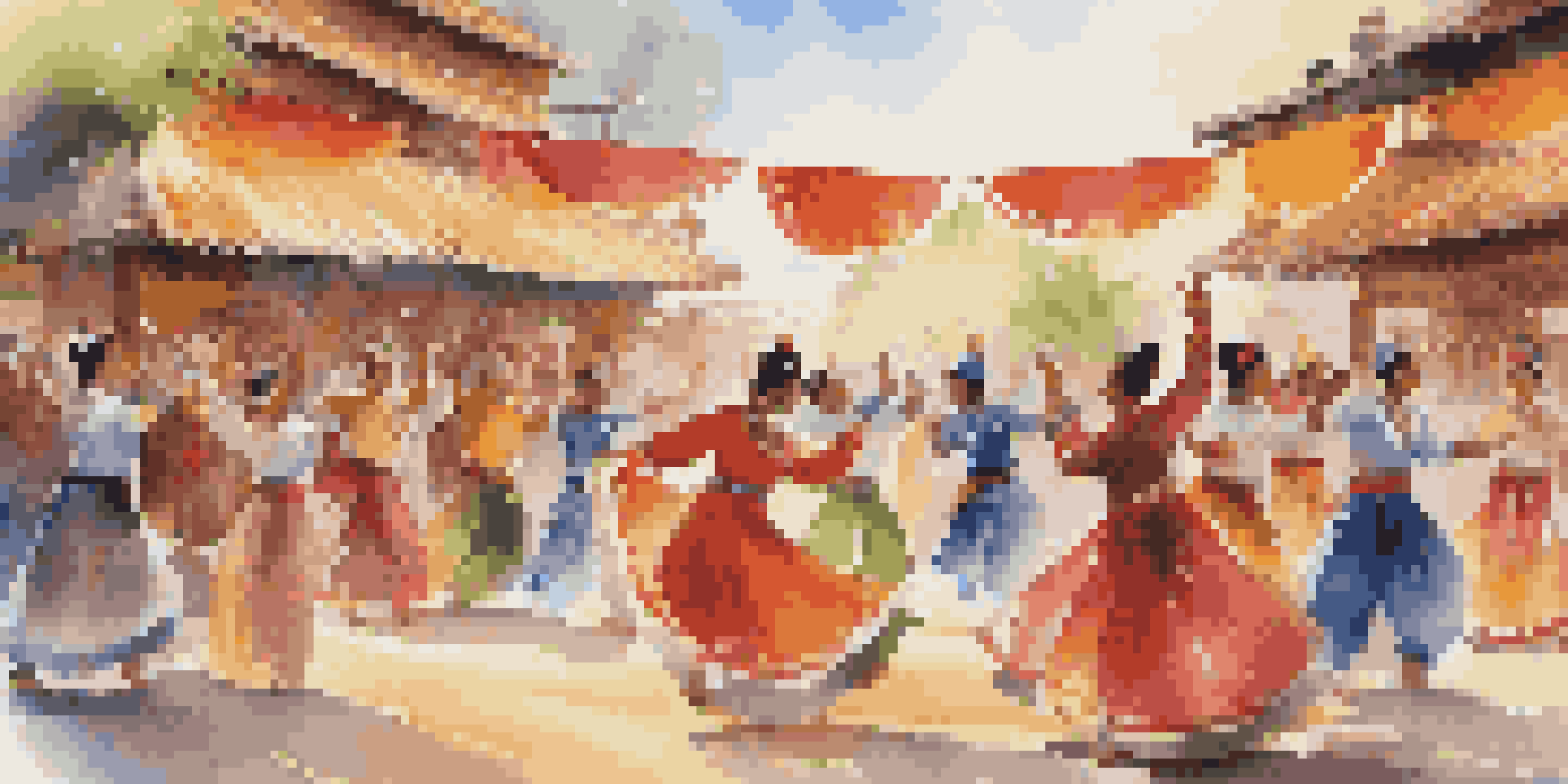How Dance Festivals Address Cultural Appropriation Issues

Understanding Cultural Appropriation in Dance
Cultural appropriation involves taking elements from one culture by another, often without understanding or respecting its significance. In the realm of dance, this can manifest when performers adopt styles from different cultures without acknowledging their origins. This not only erases the history behind the dance forms but can also perpetuate stereotypes and disrespect the communities that created them.
The Role of Dance Festivals in Promoting Awareness
Dance festivals serve as platforms for cultural exchange and education, making them ideal venues to address cultural appropriation. By hosting workshops and panels that discuss the origins of various dance forms, festivals can foster a deeper understanding among participants and audiences. This awareness helps to cultivate a respectful appreciation for the diverse cultures represented.
Cultural Awareness in Dance Festivals
Dance festivals can educate attendees about the cultural significance of various dance styles, fostering respectful appreciation.
Encouraging Authentic Representation at Festivals
Many dance festivals are now prioritizing authentic representation, ensuring that performances showcase the true essence of the cultures being highlighted. This means inviting artists from specific traditions to share their dances, rather than allowing non-native performers to mimic these styles superficially. Such practices help honor the roots of the art forms and promote genuine cultural exchange.
Engaging Local Communities in Festival Planning
Involving local communities in the planning and execution of dance festivals can significantly reduce cultural appropriation issues. When community members participate in decision-making, they can provide valuable insights on how their culture is perceived and represented. This collaborative approach not only enriches the festival experience but also builds trust and respect between organizers and the communities they feature.
Importance of Authentic Representation
Inviting native artists to perform ensures that dance showcases the true essence of their cultures, honoring their roots.
Creating Safe Spaces for Dialogue and Reflection
Dance festivals can act as safe spaces for open dialogue about cultural appropriation and its implications. By hosting discussions, Q&A sessions, or even informal gatherings, attendees are encouraged to share their perspectives and experiences. This fosters a culture of reflection and understanding, allowing participants to learn from one another and recognize the importance of cultural sensitivity.
Highlighting the Importance of Education in Dance
Education plays a critical role in combating cultural appropriation at dance festivals. Workshops led by knowledgeable instructors can guide participants through the historical and cultural contexts of specific dance styles. By emphasizing education, festivals can equip dancers with the knowledge they need to engage with different cultures respectfully and thoughtfully.
Engaging Communities in Festival Planning
Involving local communities in festival planning helps address cultural appropriation by incorporating their insights and perspectives.
Championing Inclusive and Diverse Programming
By championing inclusive and diverse programming, dance festivals can amplify underrepresented voices. Showcasing a variety of dance styles from different cultures not only enriches the festival experience but also promotes an understanding of the complexities involved in cultural expression. This commitment to diversity helps counteract the tendency toward cultural appropriation and reinforces the idea of shared cultural ownership.
Looking to the Future: Evolving Perspectives on Dance
As conversations around cultural appropriation evolve, dance festivals must adapt to these changing perspectives. Future festivals may increasingly focus on collaborative performances that blend styles while honoring their origins. This evolution not only addresses appropriation issues but also celebrates the beauty of cultural exchange, creating a richer tapestry of dance for all involved.